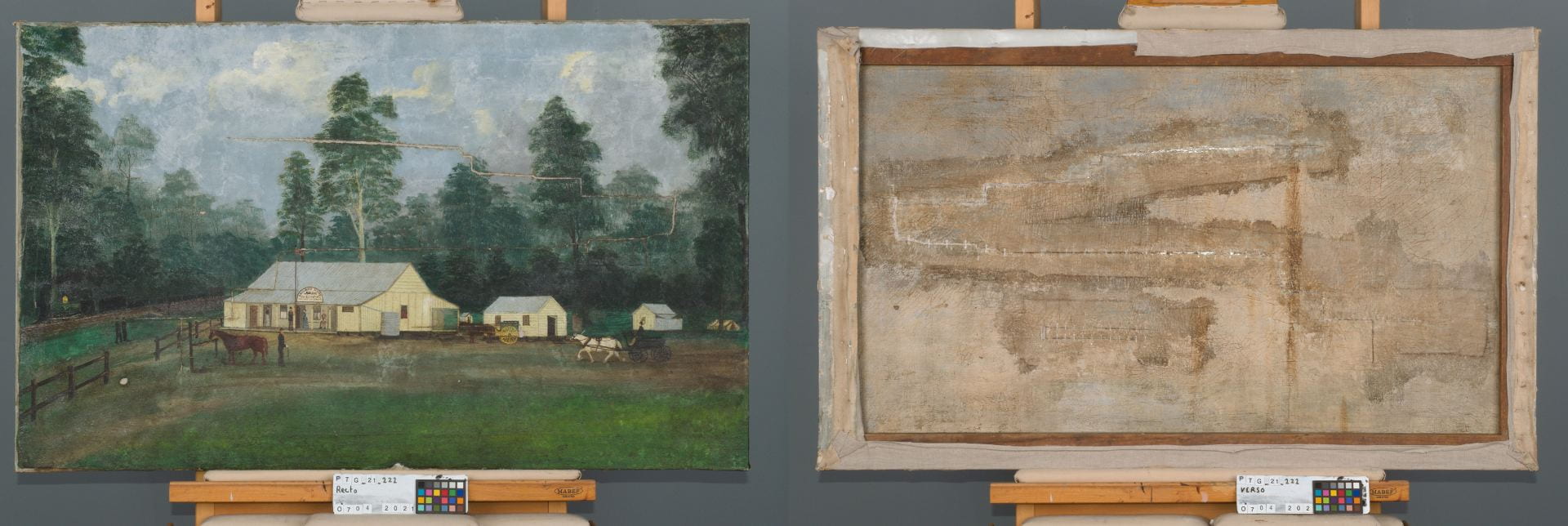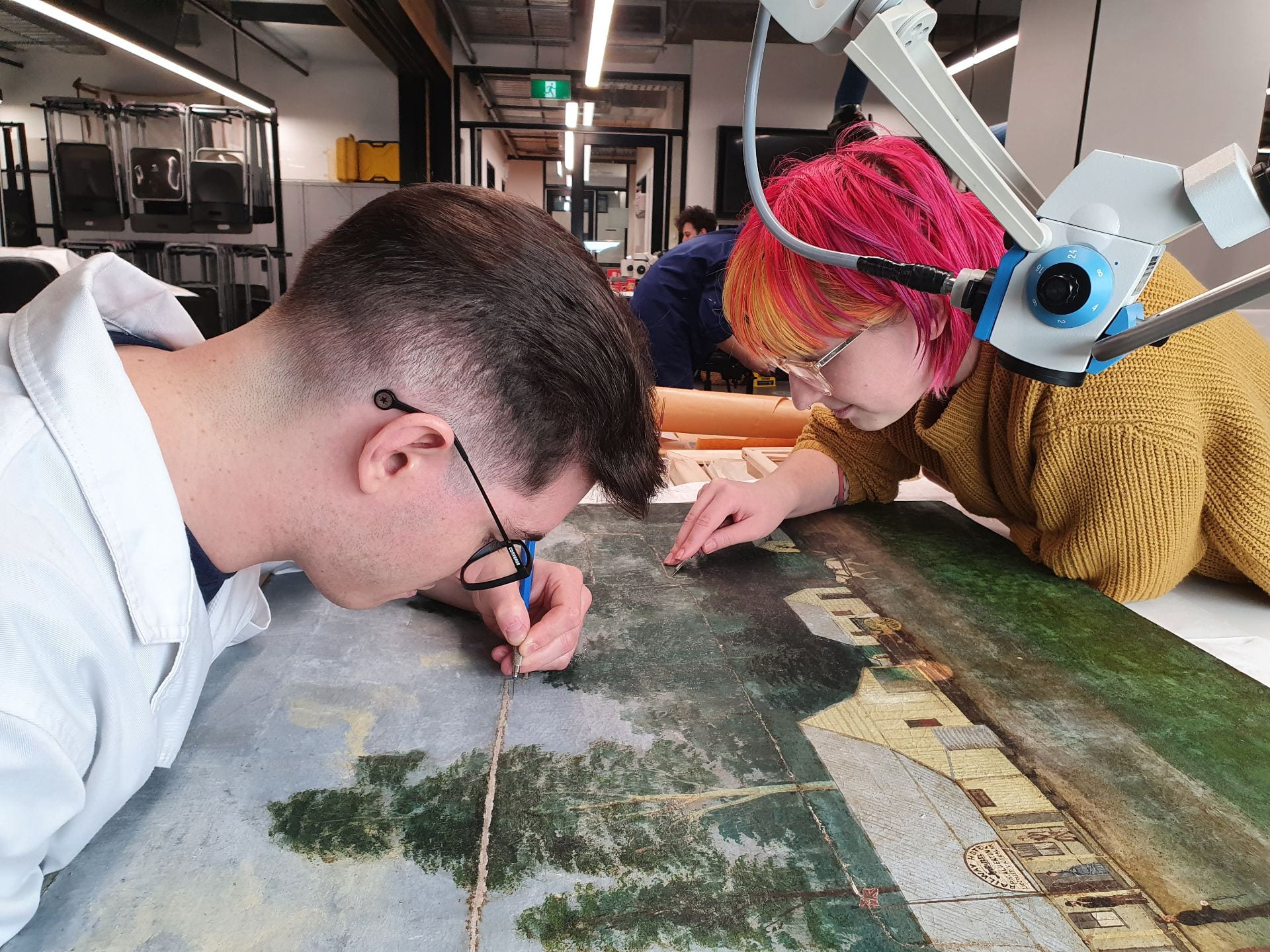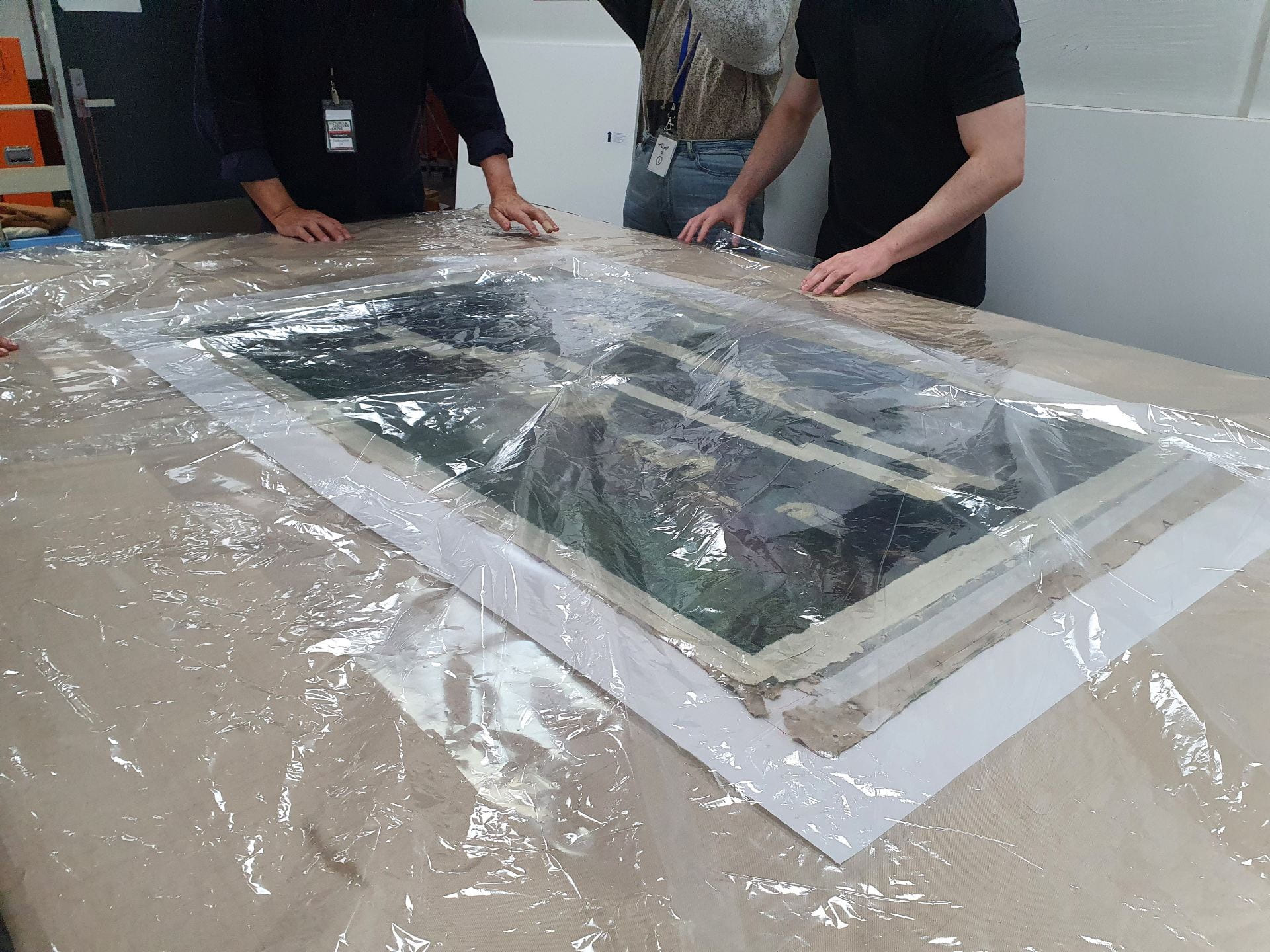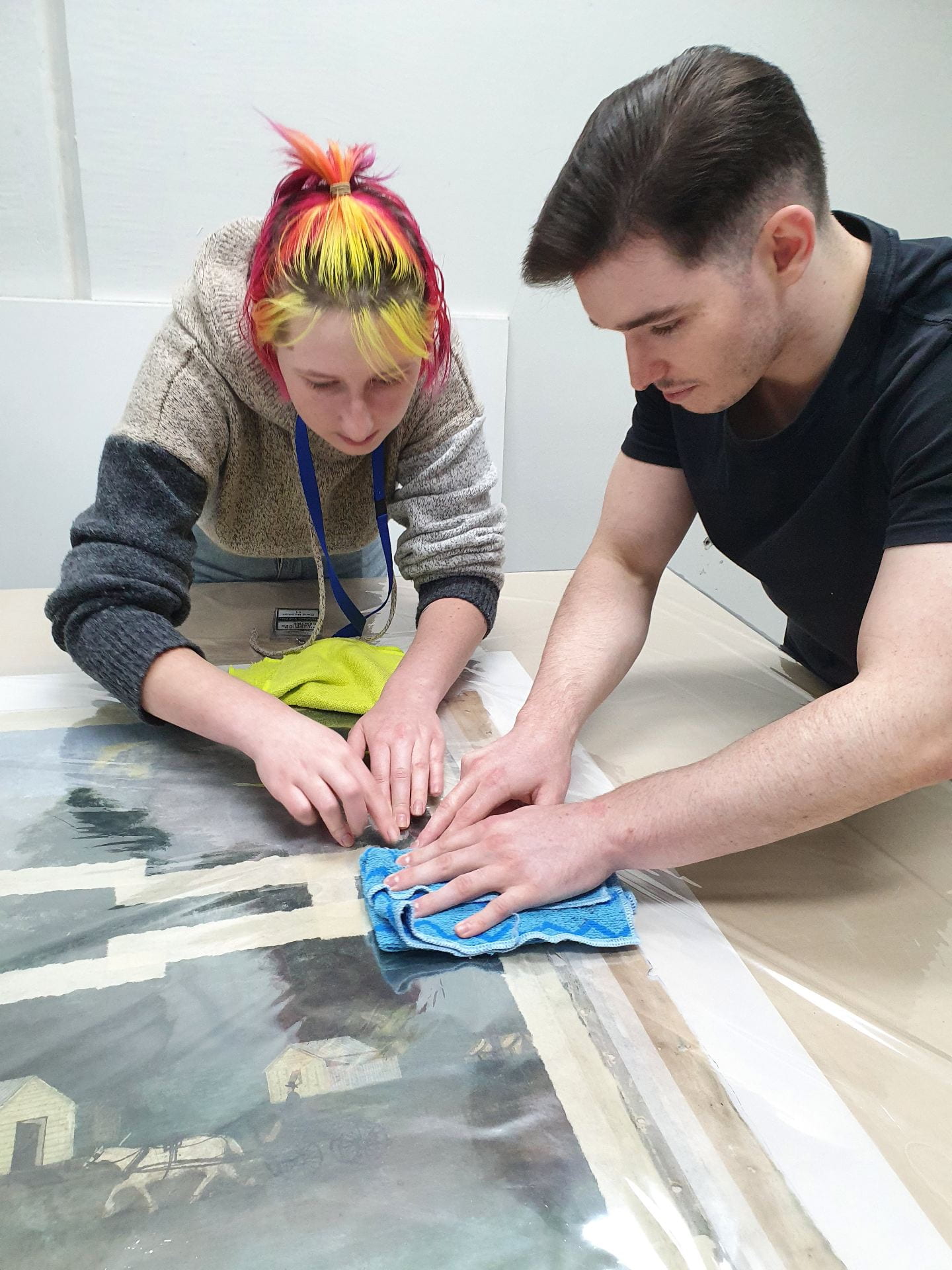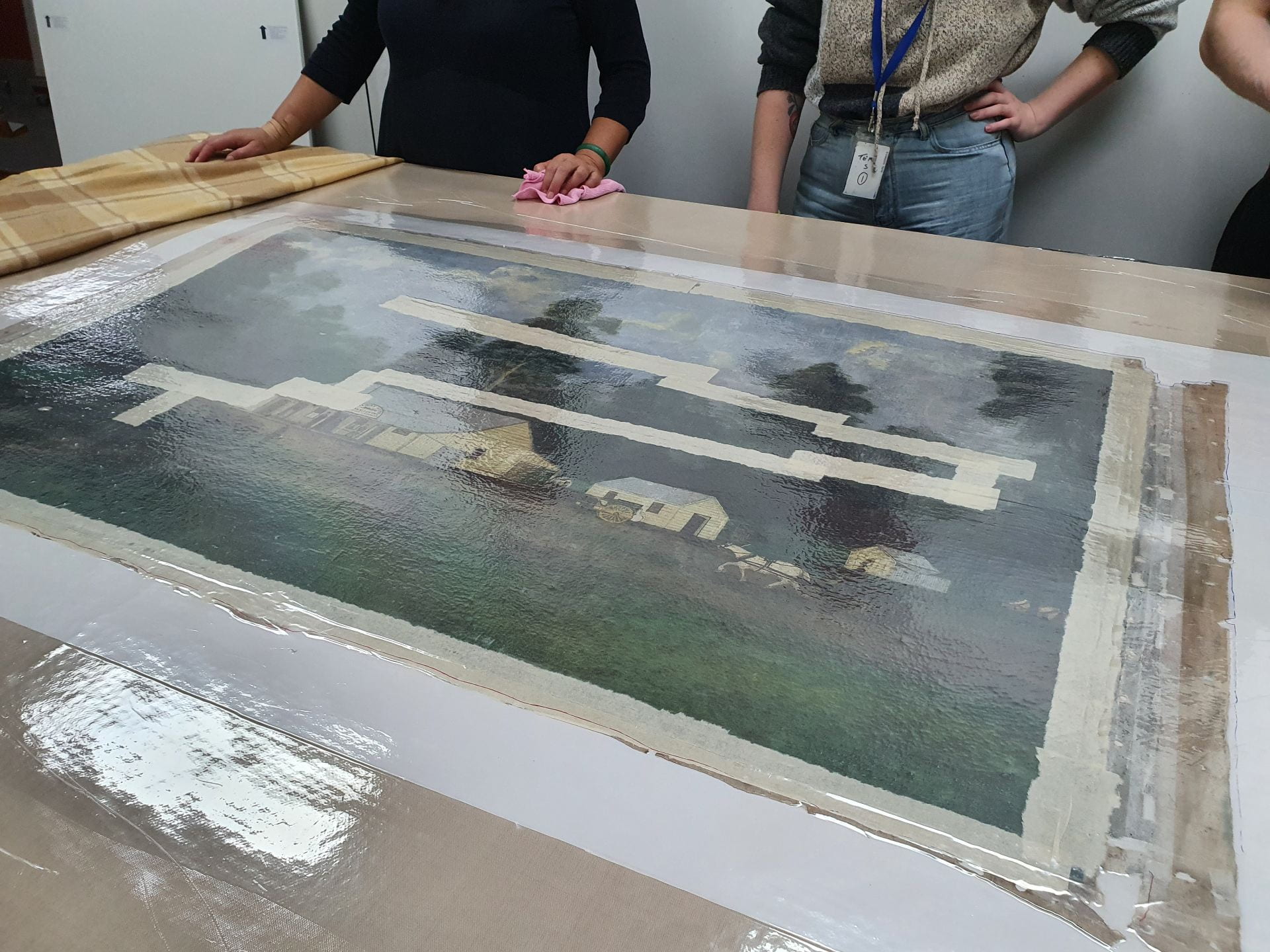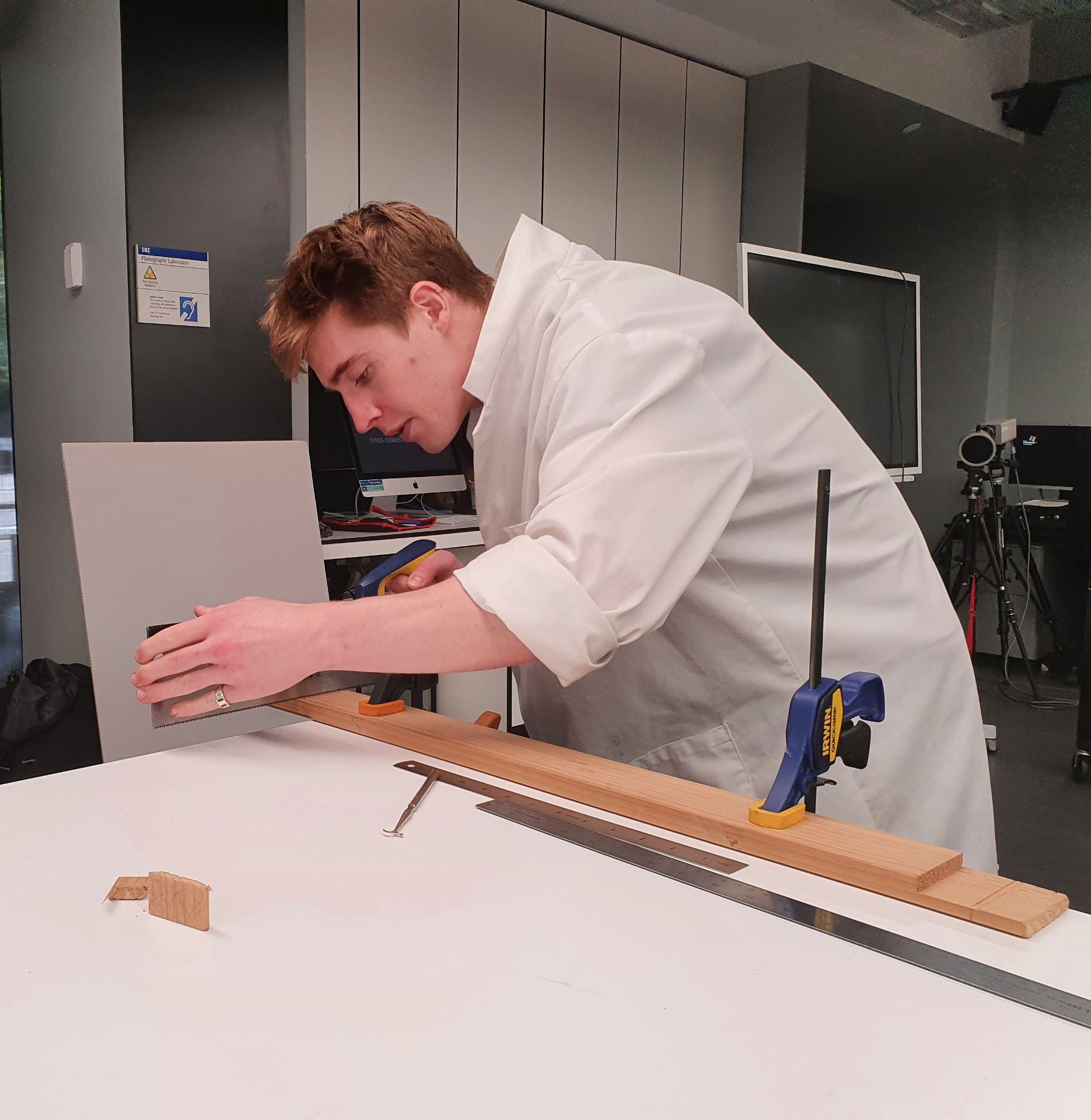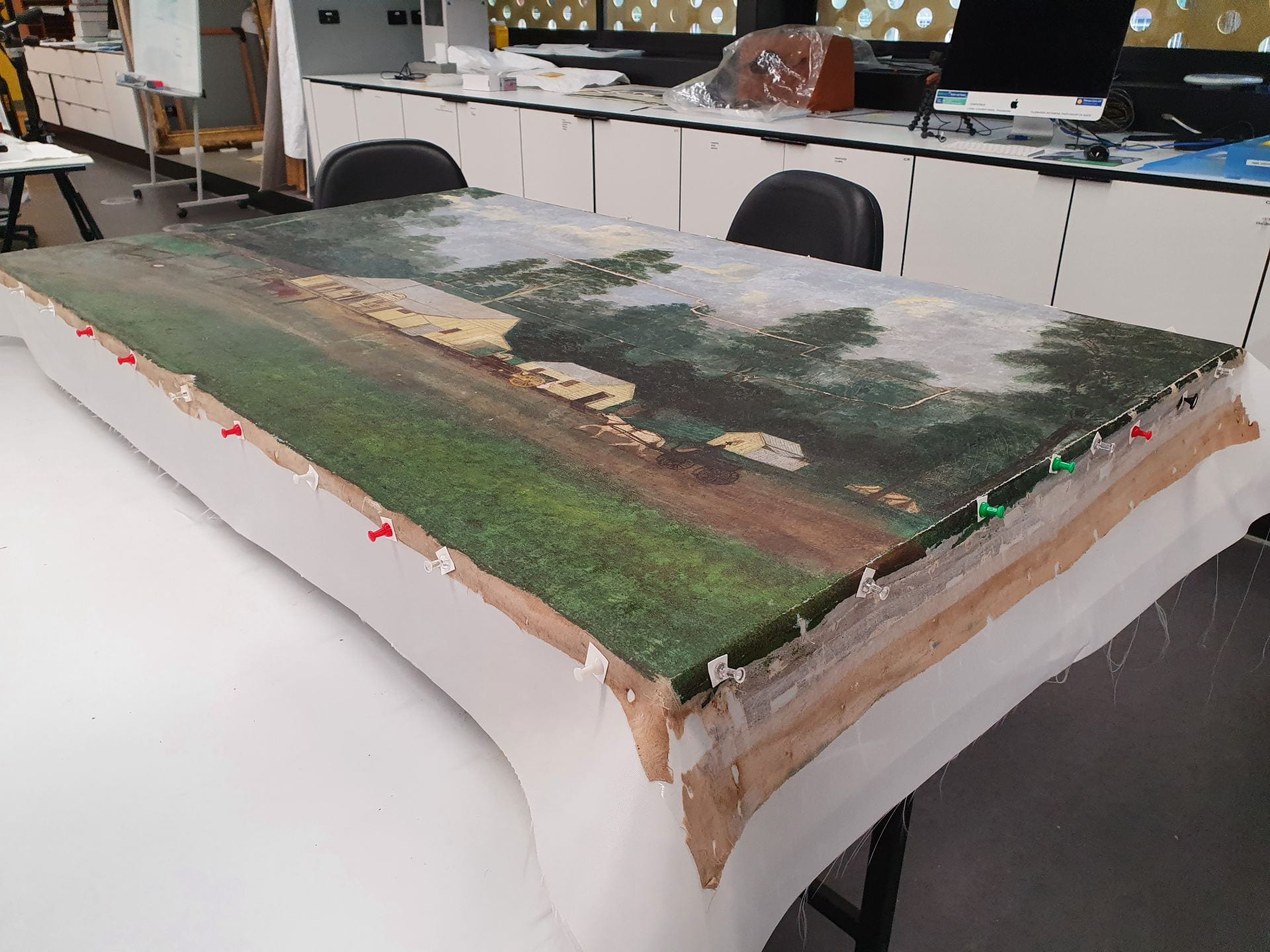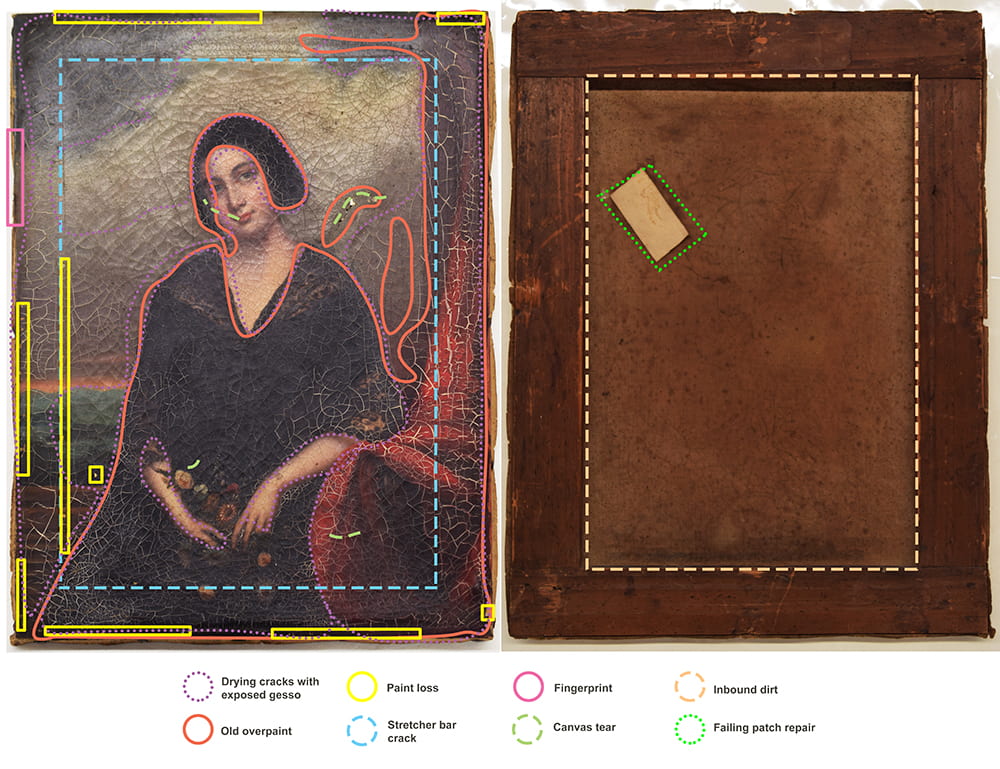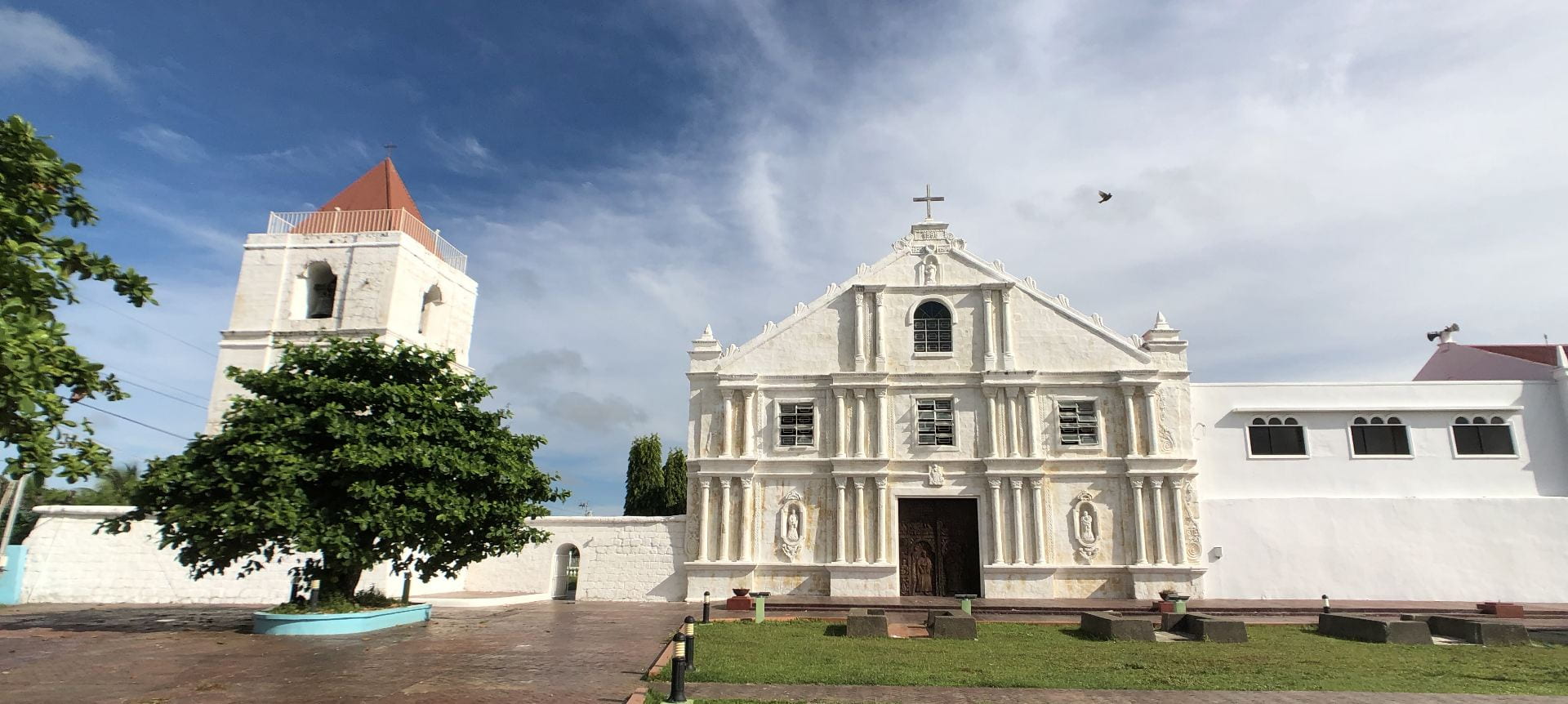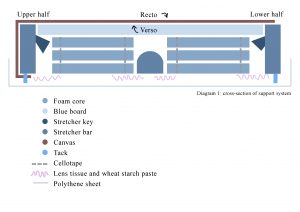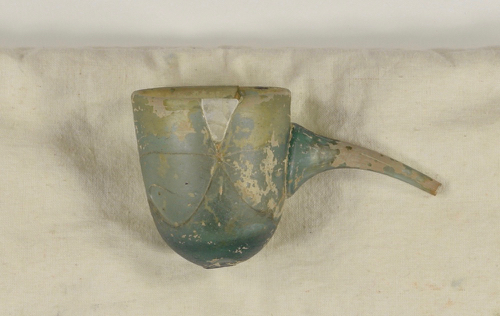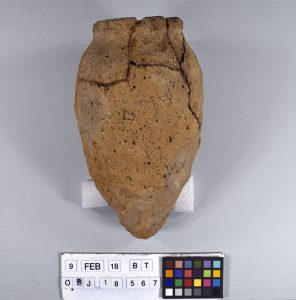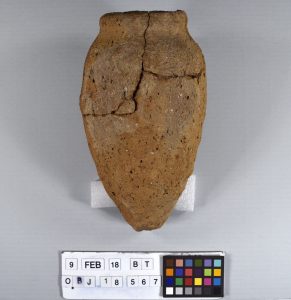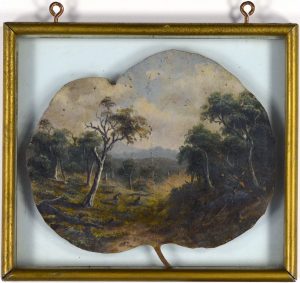Virtuality and Materiality: Decision Making in the Treatment of Margel Hinder’s Construction With Perspex Corners (Flight of Birds)
Paul Coleman
Shifting Forms: Temporal Developments in a Material World
Margel Hinder’s Construction with Perspex Corners (Flight of Birds) is a modern abstract assemblage of welded steel bars and Perspex triangles. It is characterised, like much of her work, by strong angular lines and an abstract geometry. The shapes formed by the interrelation of the bars shift and flow as the work rotates (like the flight of birds[1]) around its central hanging fixture and with the changing perspective of the viewer. The ideal rationalist concept of a static, fixed identity is thrown out the window. The work refuses capture. There is no front-facing side, no singular point of return. It is in constant flux. It casts virtual planes that constantly actualise, fluid forms becoming and evolving for interpretation within the eye of the observer. Understanding this temporal, conceptual relation between sculpture>world>observer was essential to appropriate decision making.
